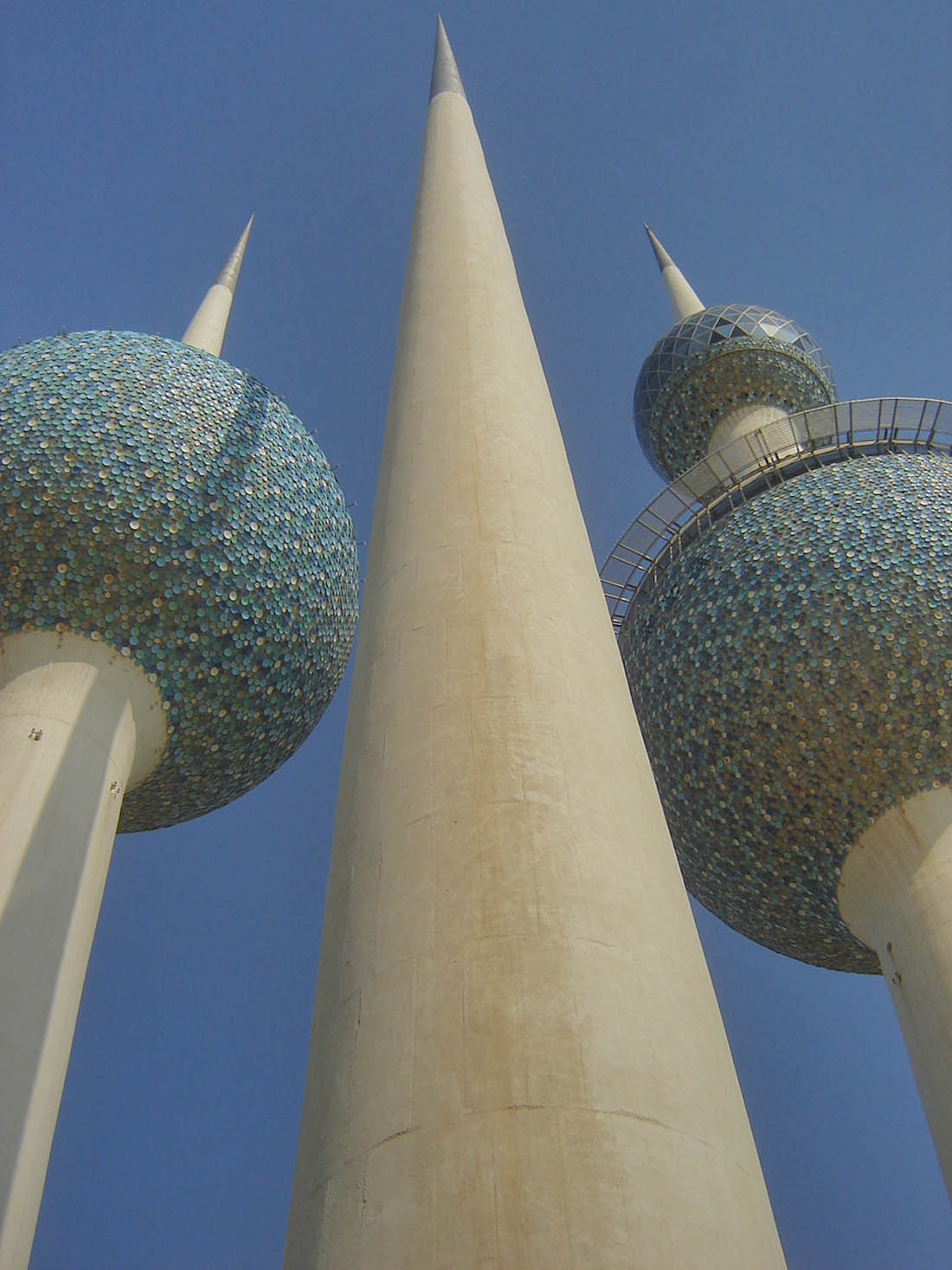
Subsequent to the first export of Kuwaiti oil in 1946, Kuwait immediately began to modernize its infrastructure. At the time, water was supplied to residents by tank trucks, which rapidly became ineffective due to the fast-growing population and development.
In order to tackle the issue of water distribution and storage, in 1965 the Ministry of Electricity and Water tasked Swedish architect Sune Lindström and his engineering firm VBB to design and construct a series of 31 water towers through Kuwait, centering on Kuwait City.

However, in order to celebrate Kuwait’s burgeoning economic clout thanks to its petroleum industry and thus, rising prominence in region, the contract for the last water towers – to be built overlooking the Arabian Gulf, as the pièces de résistance of the Kuwaiti capital – was offered to Danish architect Malene Bjørn, wife of Sune Lindström.
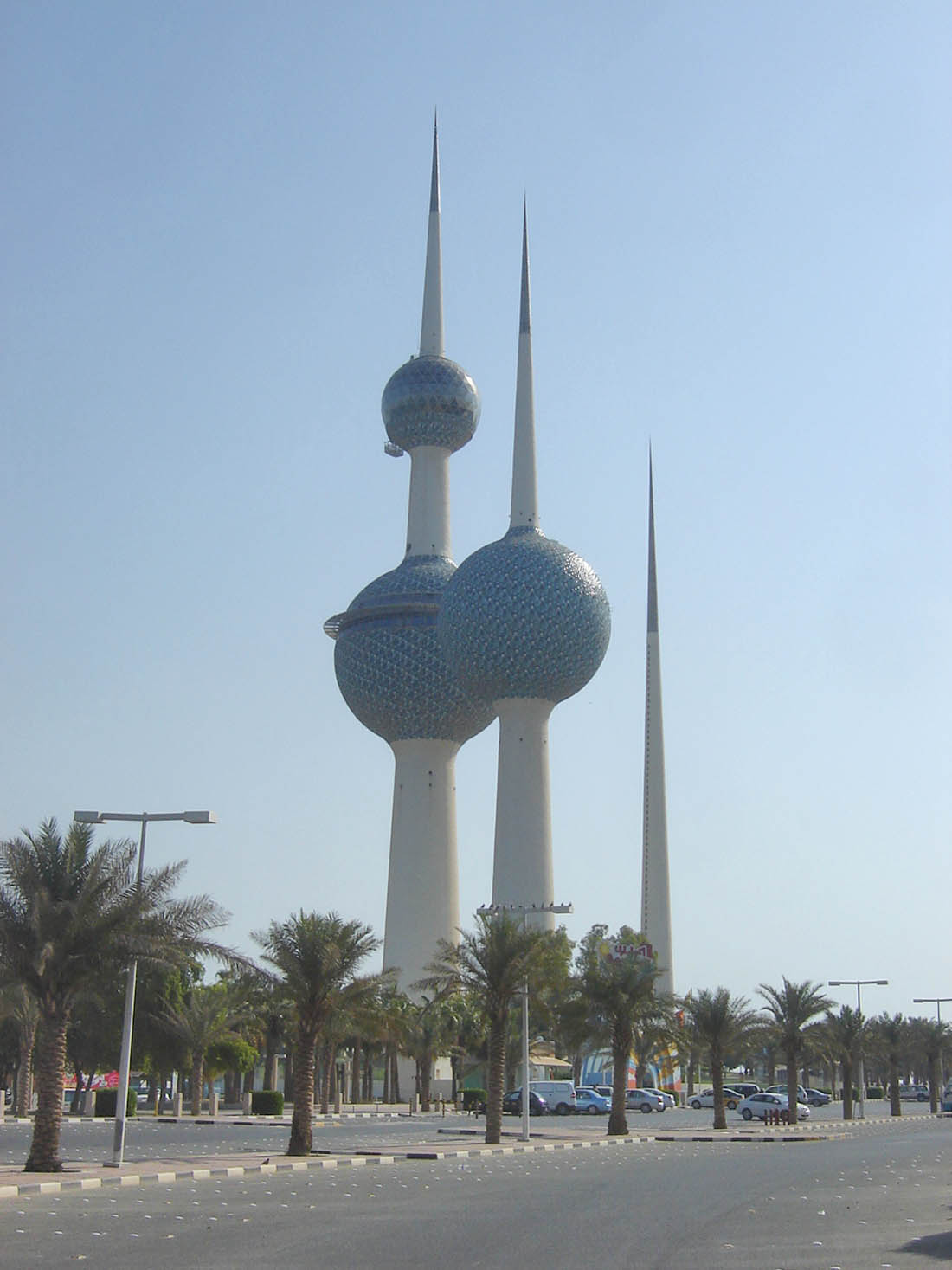
Inaugurated on February 26th, 1977 and consisting mainly of reinforced concrete, the most prominent features of the pair of water towers are the three spheres, evoking historical Islamic aesthetics in their blue, green, and grey mosaics.
In total, there are three towers. The smallest at 100 meters (~328 feet) stores a floodlight system for the complex. The second, at 145. 8 meters (~478 feet), holds water inside its sole sphere.
Finally, the tallest tower, at 185 meters (~607 feet), comprises of a lower sphere that stores water, and a higher sphere which contains an observation deck and a restaurant. I briefly visited Kuwait City in 2008, and owing to my enthusiasm for observation towers, took in a view of the sprawling desert capital:

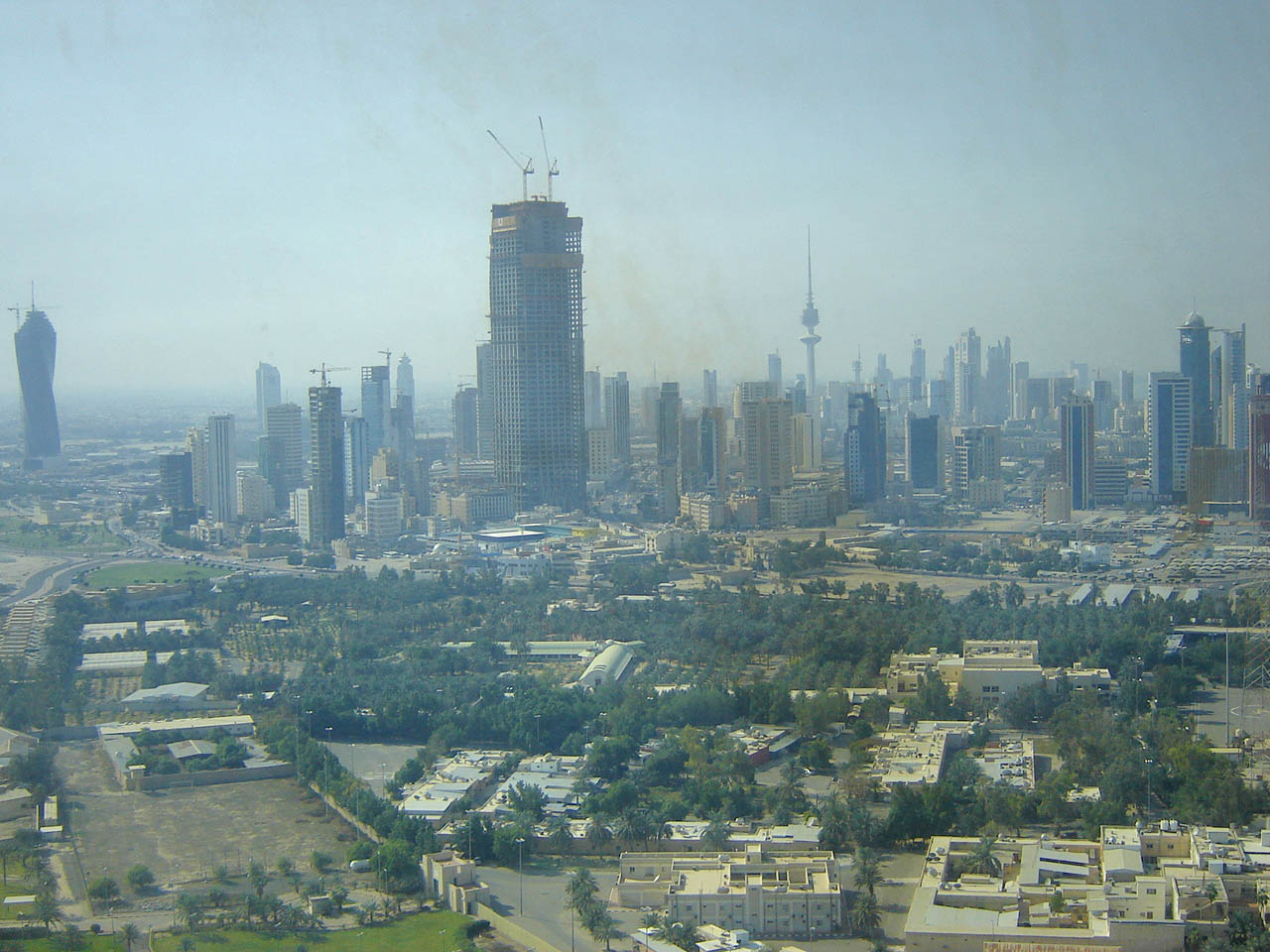
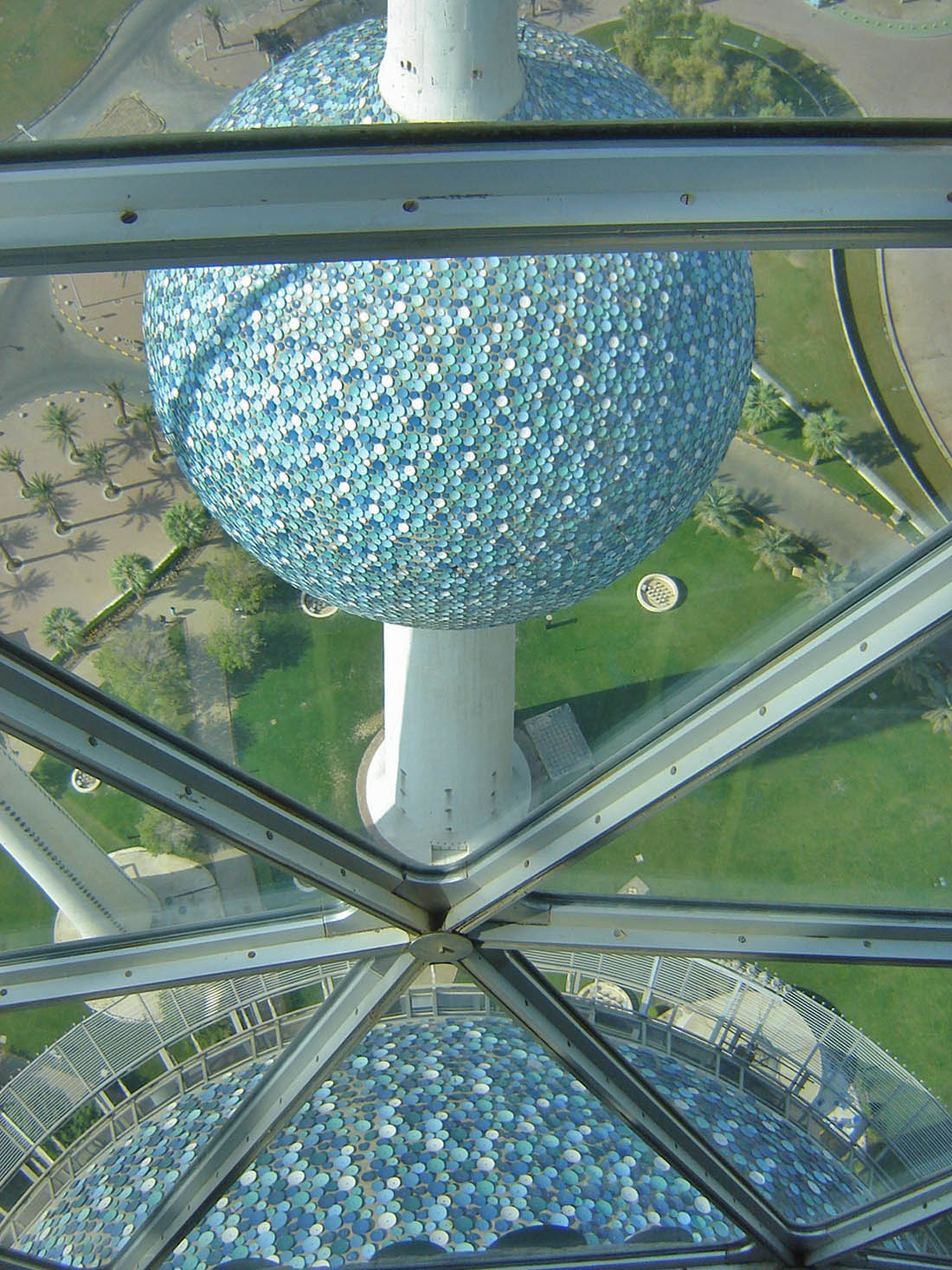
A couple of interesting tidbits about the Kuwait Towers–
In 1980, at its inaugural ceremony, the Aga Khan Development Network bestowed upon Malene Bjørn one of its awards for architecture. The awards – given triennially – are for architects and designers who have constructed meaningful and progressive structures in Muslim societies.
In 1990, when Iraq invaded Kuwait for its vast oil supply, even the observation deck wasn’t spared (there was a photo series covering the invasion at the deck):
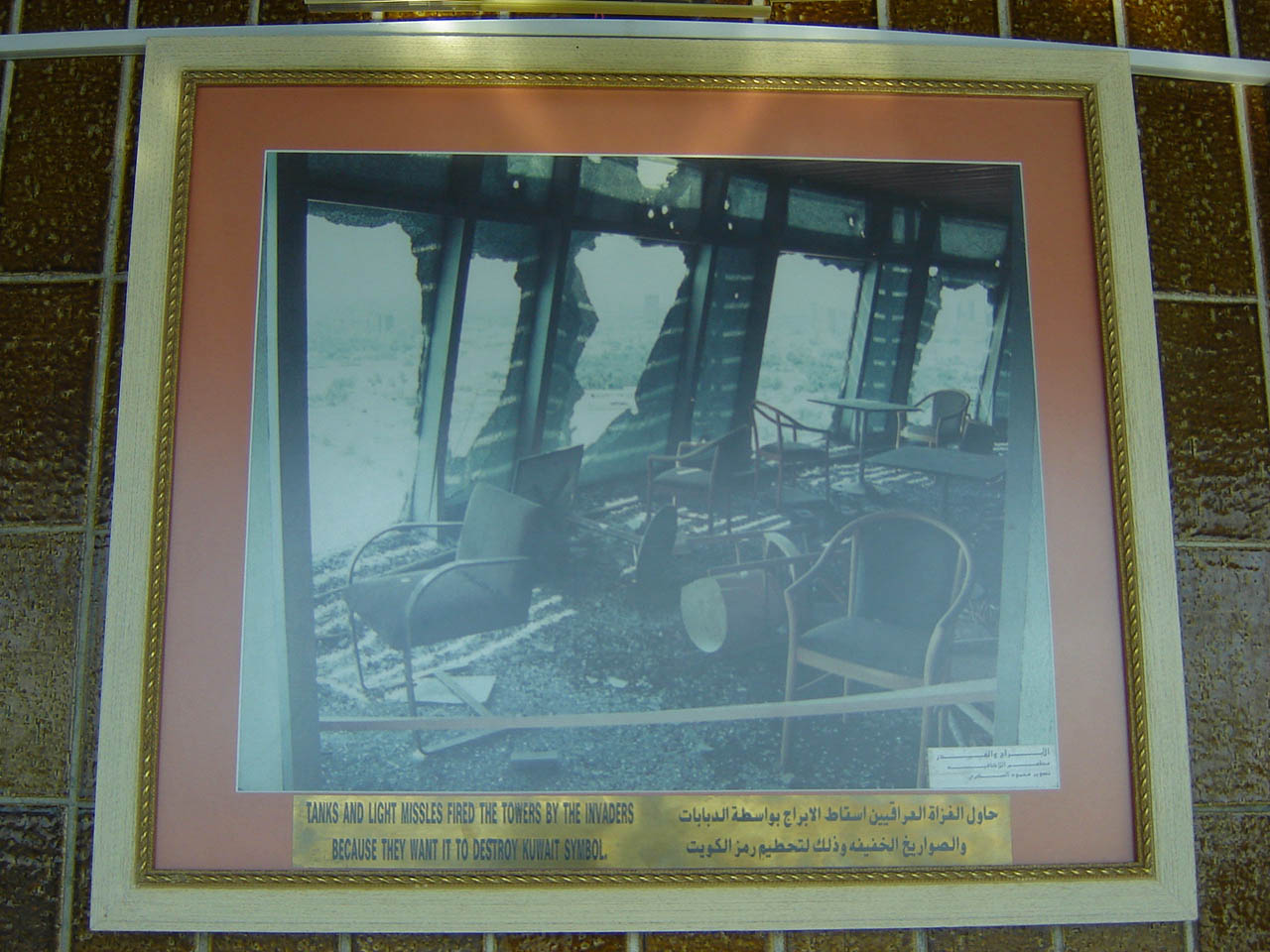
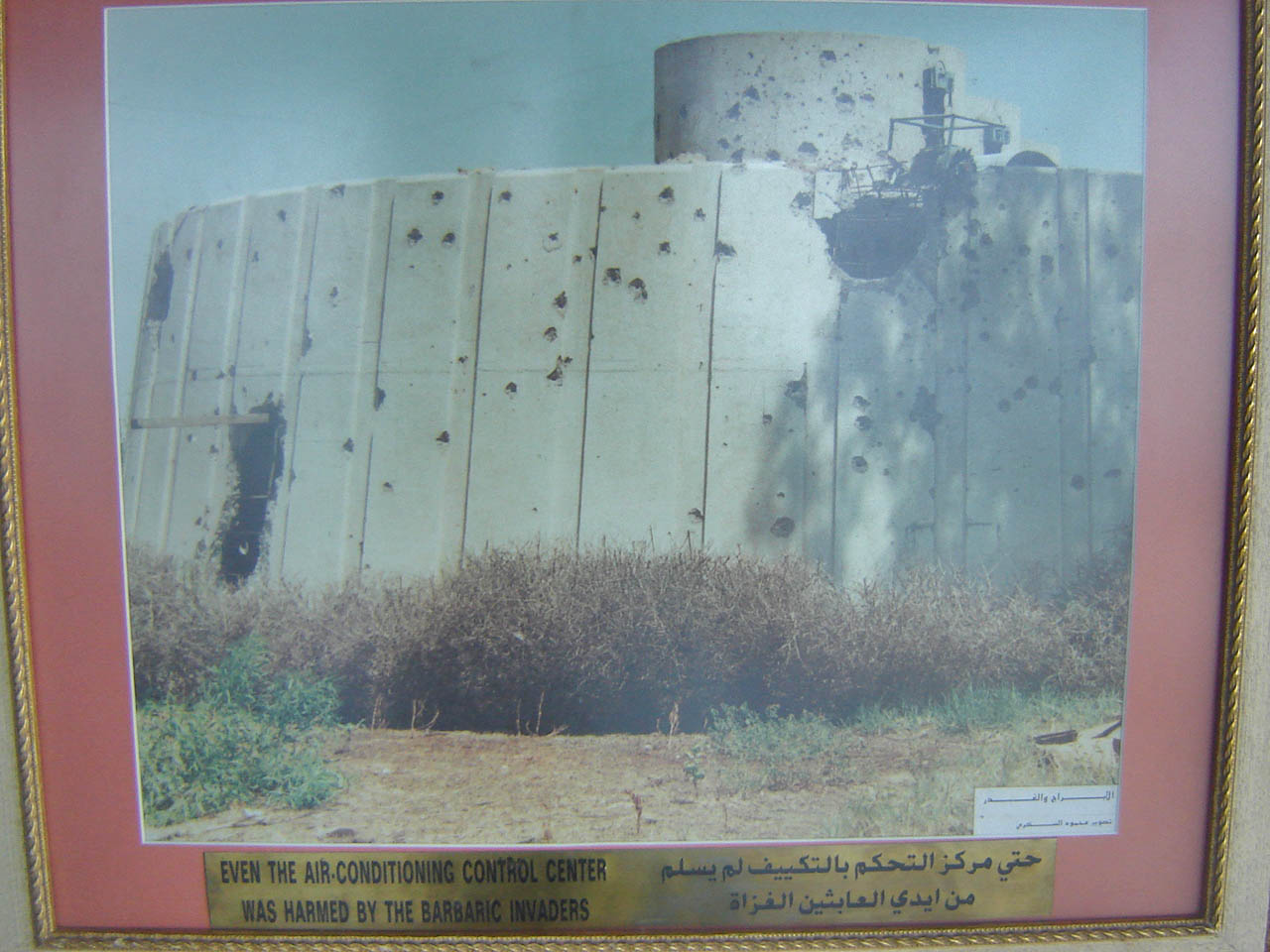
On a lighter note, between 2012 and 2016, the tallest tower, being the only one open to the public, underwent an extensive renovation. It reopened in March 2016, and just three years later, hosted a Tedx event focusing on Kuwaiti technologists and young coders.
Have you visited Kuwait?

Worth visiting. The towers may look small from distance but as you enter the attraction, you will see their massive size. The towers are beautiful and the views from the top are great. The area around towers is amazing as well, definitely, go by the water to grab the shots of water and the towers.
If you are short on time, no worries, you can visit the tower in 15-20 minutes. Don’t plan to spend more than an hour as there isn’ t much there. There is a cafe on the observation deck and part of the floor does move in 360 degrees – its kind of cool.
Thanks, Globetrotter!
They were a fun place to visit, and to even learn a little about recent Kuwaiti history.
Where else would you recommend if someone had a day in the city?